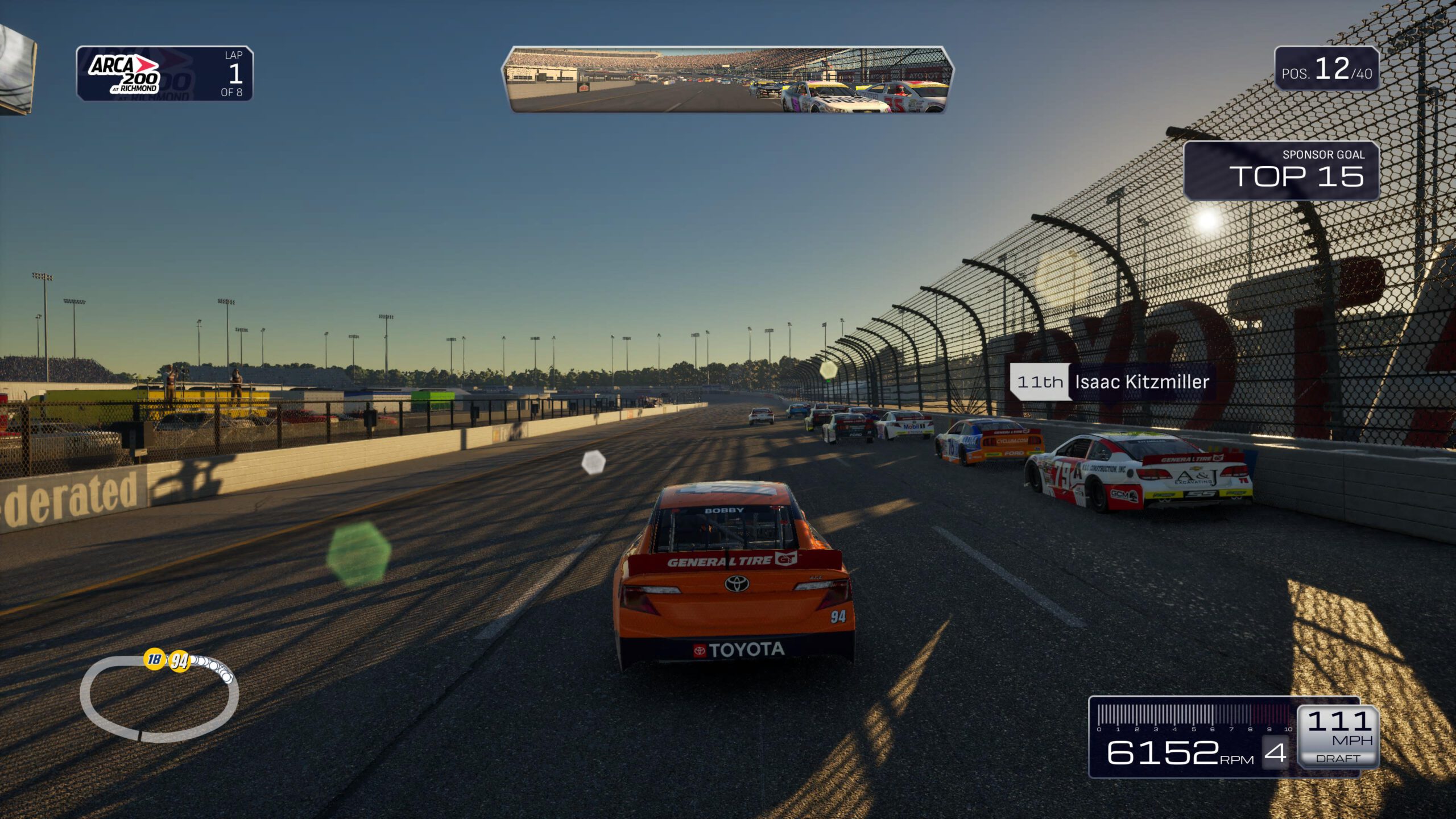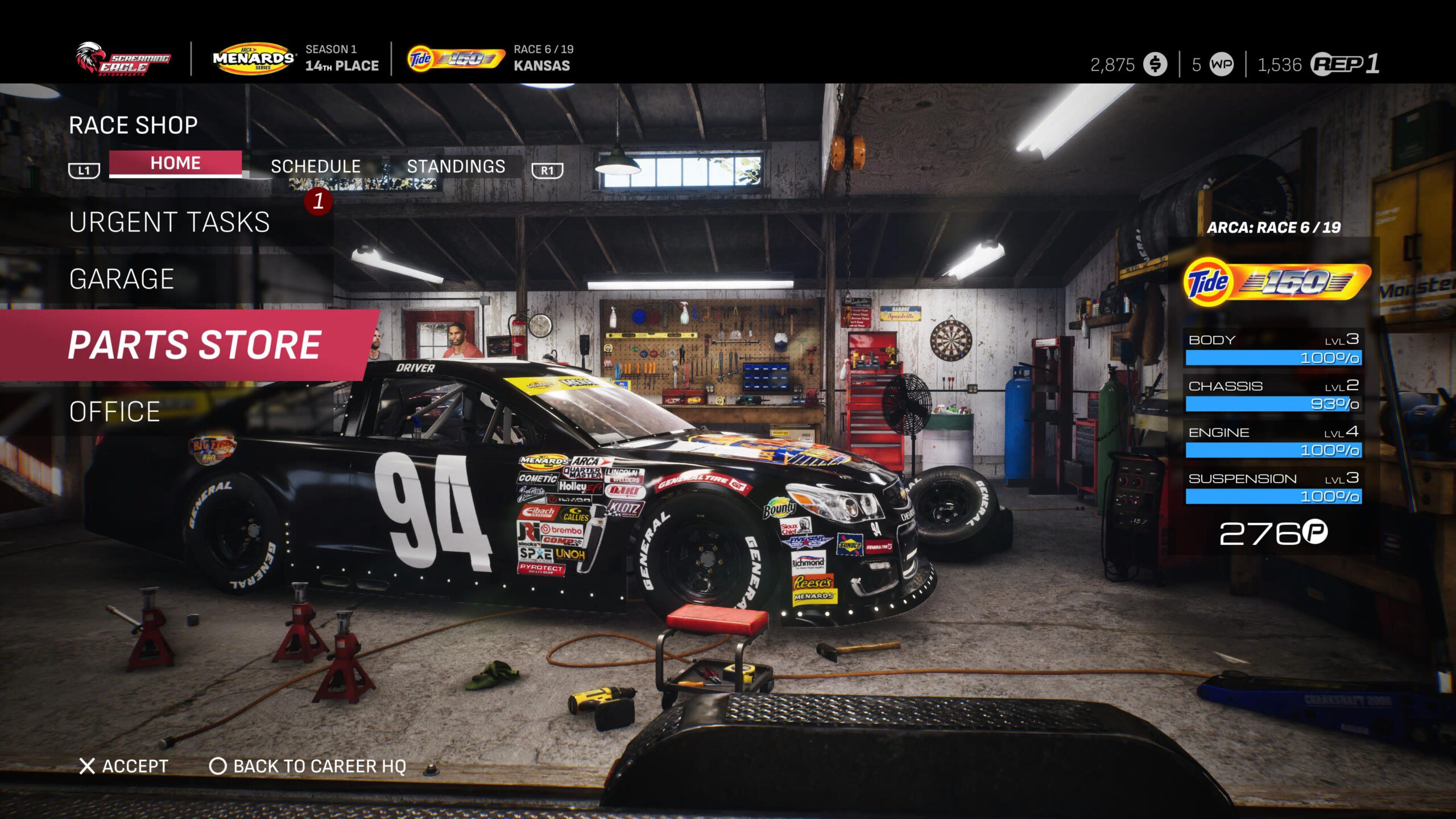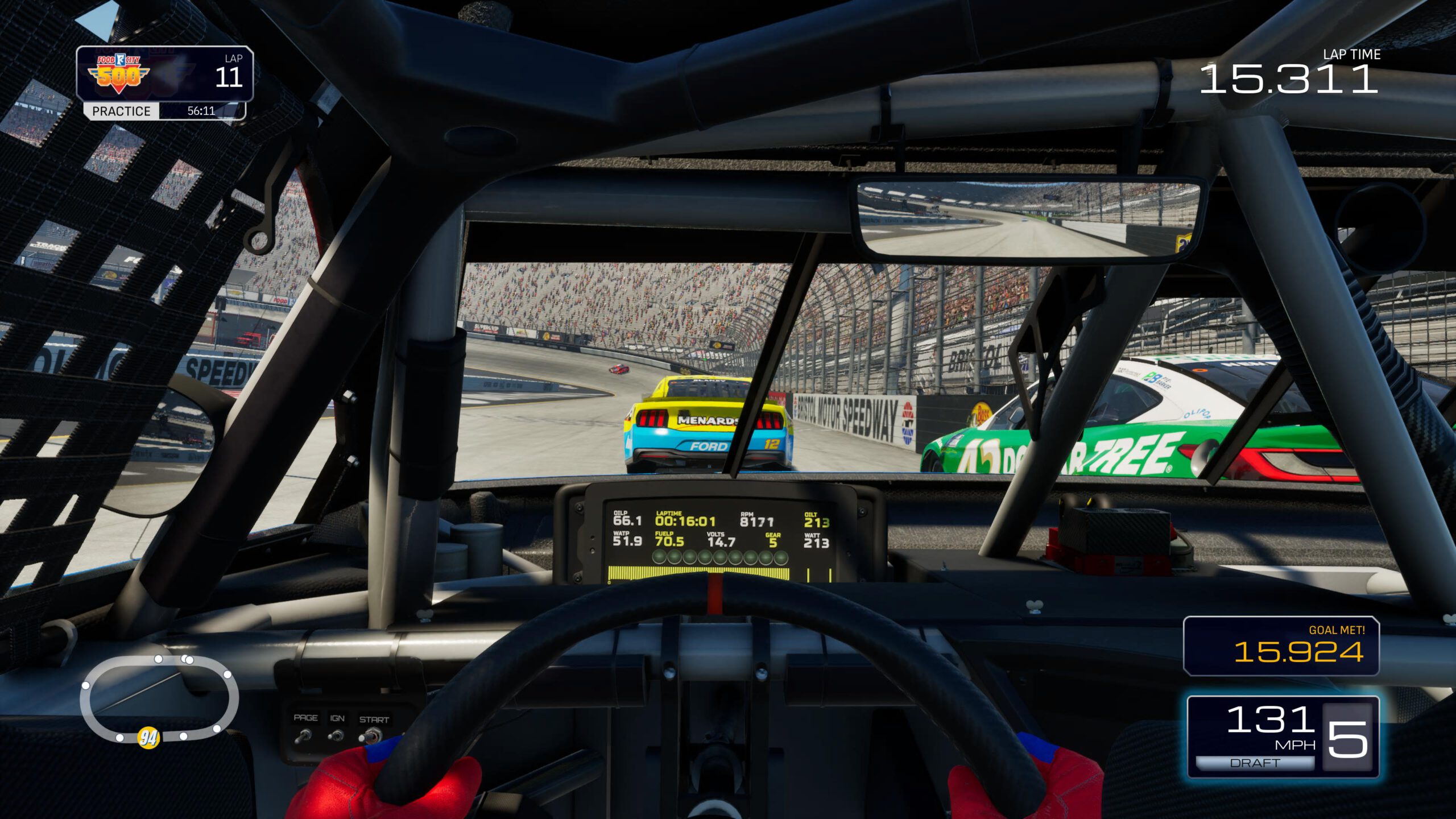NASCAR 25 arrives promising to bring the visceral thrill of American stock car racing to consoles and PC, aiming to strike a balance between accessible arcade fun and serious simulation depth. After spending time navigating the banked corners of its iconic tracks, it becomes clear that while the title delivers a good oval driving experience, it struggles significantly with presentation, campaign depth, and overall polish, leaving it feeling like a good racing engine housed within a disappointingly basic game.

Functional, But Flashes of Flatness
When judging a modern racing title, visual fidelity is often the first metric scrutinized, and here, NASCAR 25 delivers a mixed bag. The overall graphical impression is “pretty okay” but undeniably flat. While the cars are detailed enough and the tracks recognizable, the game rarely pushes beyond what is expected of the genre, failing to capture the dynamic, hyper-realistic environments seen in competitors like Gran Turismo 7, Forza Motorsport, or even the highly optimized F1 series.
The graphics do manage to impress under specific circumstances—particularly in certain lighting conditions, such as the golden hour of dusk or the stark, high-contrast glow of a night race. These moments provide welcome visual flair, but they are infrequent.
This duality—moments of polish contrasted with general mediocrity—is perhaps best illustrated in the game’s cutscenes and sound design. Pre- and post-race animations are aesthetically decent and look good even if they are identical, as do the pit stops, yet the execution of the latter is baffling. When entering the pits, the action is interrupted by a precise fade to black, the tire change is shown briefly, and then it immediately fades to black again before you are released back onto the track. This jarring technique suggests a deliberate masking of animation inconsistencies or a complete lack of dedicated pit crew development, stripping the immersion out of what should be a high-stakes, frantic moment.
Similarly, the soundscape mirrors the graphical impression: functional but uninspired. Engine noises are present, tires squeal, and the PA static is there, but there is nothing distinctive or special that elevates the auditory experience above the baseline expectations of a modern racing simulator.

Precision Handling and Exceptional Force Feedback
For players utilizing a standard controller, the game functions well enough to be enjoyable, offering predictable steering that allows for competitive racing. However, the force feedback is minimal and disappointing. Feedback is generally only transmitted to the player in extreme circumstances—for example, when the car is already losing significant grip and heading toward a slide. This minimal response limits the player’s ability to correct minor slips and truly communicate with the car, often making saves too late.
The tide turns dramatically when transitioning to a dedicated wheel and pedal setup. This is where NASCAR 25’s force feedback genuinely shines, elevating the game somewhat. The differences between vehicle classes—from the heavier stock cars to the modified trucks—are immediately palpable through the wheel. Subtle vibrations accurately communicate tire scrub, surface texture, and the gradual migration of weight throughout the chassis, allowing drivers to intuitively feel the car’s limits. Crucially, the effects of tuning adjustments are clearly communicated back to the player, rewarding those who invest time in setup changes. For players committed to simulation racing, the wheel experience represents the peak of this title.
Complementing this is a competent AI system. Opponents scale effectively across multiple difficulty levels, offering genuine challenges without resorting to unfair speed boosts or rubber-banding. Crucially, the AI exhibits intelligent driving behavior, showing variation in racing lines and making contextual decisions that provide the feeling that opponents are genuinely “thinking” and reacting to the race environment.

The Standard, Simple Campaign Grind
While the driving itself is exhilarating, the game’s structure surrounding the races—the Campaign—is decidedly lackluster. The career mode is simple, basic, and utterly standard for the genre, featuring none of the engaging narrative or complex team management elements seen in major sports franchises.
Players begin by selecting a name, team colors, and logos for their car and crew attire, but strangely, the appearance of the character driving the multimillion-dollar stock car remains uncustomizable. The season structure involves the repetitive cycle of upgrading and repairing the car, managing basic sponsorships, and hiring or firing staff. There’s little to invest in the player emotionally, and the core management loop quickly feels like a chore rather than a rewarding progression system.
An attempt at adding atmosphere comes in the form of occasional campaign clips featuring a fake podcast, including prominent NASCAR personality Dale Earnhardt Jr. While this gesture connects the game to real-world culture, the presentation is basic and fails to add significant depth or engagement to the otherwise dry campaign structure. Ultimately, the career mode serves merely as a scaffolding for the driving, offering little reason to invest beyond the immediate gratification of winning the next race.

Great Driving, But Repetitive Loops
Despite the campaign’s simplicity, the gameplay on the track remains the core strength. The feel of the cars is excellent, allowing for sustained, exciting battles with opponents. Even if the majority of the game consists of turning left on oval circuits, the inherent thrill of slipstreaming, managing tire wear, and executing precision passes keeps the experience fresh—at least initially.
However, the game struggles to maintain this excitement over extended play sessions. Given the necessary constraints of NASCAR tracks, the inherent repetitiveness of the racing format begins to set in after a significant investment of time. The lack of variety in the environments, combined with the lack of compelling incentive from the campaign, means the player’s enjoyment will largely depend on their existing enthusiasm for the sport. For a die-hard NASCAR fan, this loop may be satisfying, but for a general racing enthusiast, the game begins to feel shallow after the initial thrill wears off.
Conclusion
NASCAR 25 is a game of pronounced contrasts. Its driving simulation is good, and the core action on the track is exciting, competitive, and technically solid, bolstered by intelligent AI. However, the game is significantly hampered by its presentation—the functional but flat graphics, the bizarre pit stop animations, and the uninspiring sound design. Furthermore, the Campaign is basic and unengaging, serving as a minimal wrapper around the central gameplay.
Ultimately, NASCAR 25 is best recommended for the dedicated fanbase. If you are a NASCAR enthusiast looking for a serious, physics-driven simulation of oval track racing, particularly if you own a racing wheel, the driving experience is worth the price of admission. If you are looking for a highly polished, visually stunning, or deeply engaging racing game with a compelling campaign, NASCAR 25 does not reach the caliber of its genre competition.

Leave a Reply